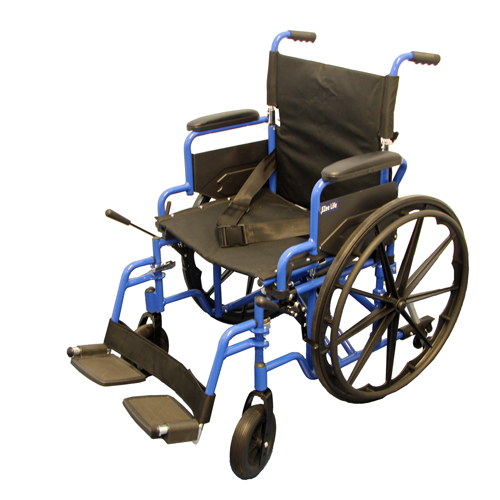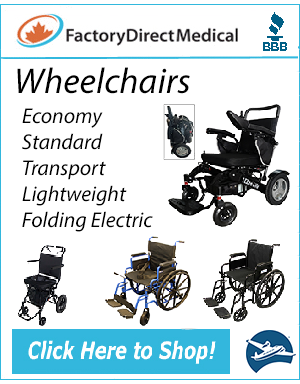Manual Wheelchair Features and Components
Wheelchairs have many features to make the equipment more functional for the end user, but there are variations on these features and reasons why each variation is important to each user.
When prescribing a wheelchair there are many decisions which have to be made and an understanding of how each decision will affect other decisions is important. For instance, if you choose a low seat height, you can't choose large wheels as the wheels will affect the seat height. Another example would be, if you choose 70 degree footrests you may not be able to choose 8" casters. Often choosing the right wheelchair configuration for a wheelchair is a seemingly never ending series of compromises.
Generally, choosing the right cushioning and back support for comfort, posture and seating tolerance is the first step in prescribing a wheelchair. Once it's determined that the best configuration of seating products has been chosen, the configuration of the wheelchair can be decided. A few of the factors which need to be considered when choosing a configuration for a wheelchair are the user's environment, prognosis, abilities and activities. The wheelchair should be functional in the user's environment, adaptable to the user's prognosis, enhance their abilities and enable their participation in desired their activities.
I've put together several pages on the options and features of manual wheelchairs and a short description of each component including some of the advantages or disadvantages of each in the Wheelchair Parts & Accessories list below.
Wheelchair Types
- Economy Wheelchairs
- Standard Wheelchairs
- Lightweight Wheelchairs
- Lightweight Adjustable Wheelchairs
- Rigid Wheelchairs
- Reclining Wheelchairs
- Tilting Wheelchairs
- Pediatric Wheelchairs
- Bariatric Wheelchairs



 Online Vendors
Online Vendors  US Online Vendors
US Online Vendors 



